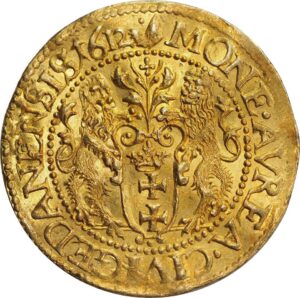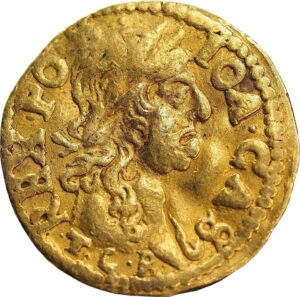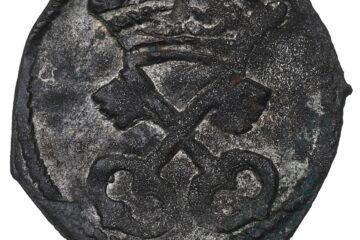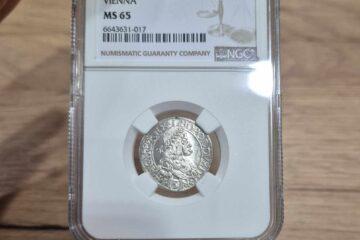At our E-Auction 5 – Polish gold coins
Staying on the topic of gold, in this post, we will show you two great Polish coins that many collectors of Royal Poland dream of.
As we can read in Edmund Kopicki’s book “Coins of Zygmunt III Waza”, the activities of the Gdańsk Mint can be divided into 4 periods.
1588–1601 – minting denarii, trojak coins and ducats,
1601–1608 – period of inactivity,
1608–1627 – minting trzeciak coins, grosz coins and ort coins,
1627–1632 – minting ducats.
Ducats were minted in the years 1588–1601, 1609–1632, so they constitute an amazing chapter in Polish history. Gdańsk coins from the first half of the 17th century are one of the most beautiful and refined coins in the world from that period! The accuracy of minting, good raw material and amazing coin designs have made them one of the most coveted coins by collectors.
The most accurate study of the topic at present, collecting most of the known copies in one place, is the ‘Gold of the Wasa Dynasty’ by the late Dr. Jarosław Dutkowski, the copy from our auction is a combination of stamps not described in the above literature.
A variation with a lowercase “12” in the date. Above the coat of arms there is a branch with one flower in the center and the obverse legend ending with L.R.P.
Obverse: along the pearl edge a cartouche with the town coat of arms supported by lions, topped with a branch, along the outer edge a legend beginning with the mint mark bear’s paw:
MONE•AVREA•CIVI GEDANENSIS 1612;
Reverse: along the pearl rim, a royal bust with a crown, mantle armor fastened with a rosette jewel and a tubular ruff, to the right, along the outer rim a legend:
•SIGIS•3•D:G•REX•POL•M•D:L•R•P•;
The coin was taken from the NGC grading, which received the MS62 grade. An excellent item with a perfectly preserved detail and an excellent mint gloss!
———————————————————————————–
The second coin can evoke a lot of emotions, how many beginner collectors mentioned the ‘golden boratins’? Are there golden borates?
You will find the answer below, the coin from the stories is a half-ducat from the Vilnius mint, minted in 1665. The issue was modeled on szelags popularly known as boratins (from the name of the originator of the minting of this otherwise mean coin), hence the similarity to one of the most characteristic and largest Polish money issues .
Obverse: the king’s head in a laurel wreath facing right, with the initials T.L.B. Tytus Liwiusz Boratini, legend along the rim:
IOA•CAS-REX•PO•S;
Reverse: Chase topped with a miter, underneath it is a tied HKPL monogram, legend along the rim:
MON•AVR•MAG•DVC•LIT•1665;
Despite the low rarity rating of Kopicki (R2), the coin is extremely rare in trade, most often once every few years ![]() The coin will be an interesting supplement to the collection of Lithuanian coins, Polish ducats and for collectors of Jan Kazimierz’s coinage.
The coin will be an interesting supplement to the collection of Lithuanian coins, Polish ducats and for collectors of Jan Kazimierz’s coinage.
We invite you to register and submit limits on www.rda.onebid.pl







0 Comments